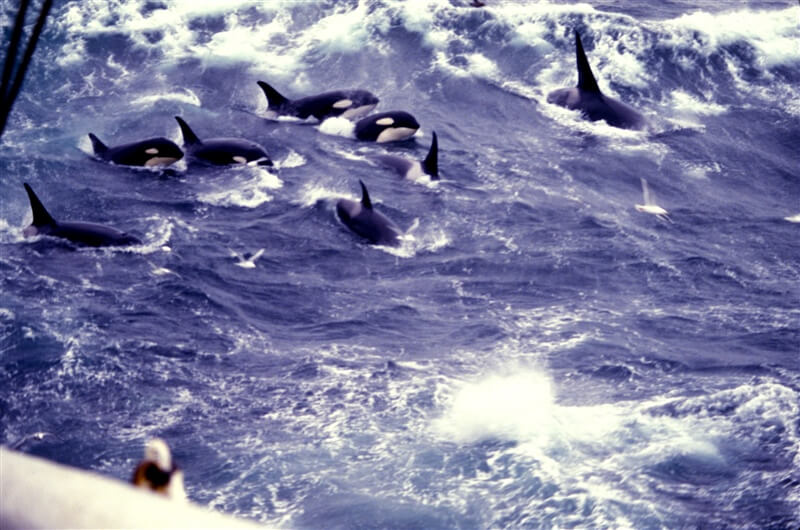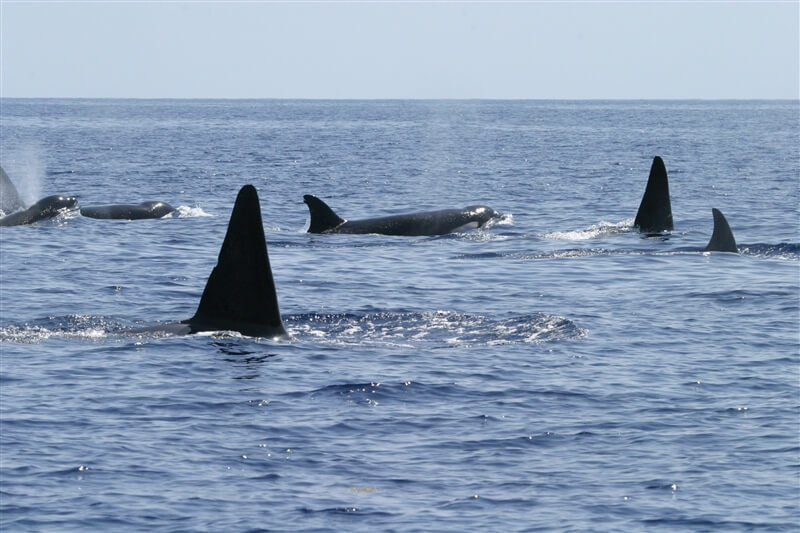Why is the Strait of Gibraltar killer whale subpopulation increasingly interacting with boats? How did this behaviour originate? These are the questions that many biologists around the world are asking themselves.
The Strait of Gibraltar, which connects the Atlantic Ocean to the Mediterranean Sea, is a strategic sea route used every day by a considerable number of ships. However, this area also harbours rich marine biodiversity, including a population of killer whales. Also called orcas, these marine predators are recognized for their intelligence, sophisticated social interactions and complex mode of communication, all of which makes them truly unique. They feed mainly on fish, although they sometimes attack mammals and seabirds. The Strait of Gibraltar is a prime foraging area for them as it teems with their favourite prey: the bluefin tuna.
These iconic marine animals are unfortunately facing increasingly frequent interactions with ships, raising concerns for their well-being and conservation. What worries – and intrigues – the most is that some individuals in the community have “attacked” ships, three of which have sunk to the sea floor. Considering the apparent calmness of the animals in the videos reviewed, some scientists prefer to speak of interactions or negative interactions (in the event of damage to boats) rather than attacks. Since 2020, there have been approximately 500 “contacts” between killer whales and ships, though a contact does not necessarily imply a physical interaction. Experts are fascinated by this behaviour, as it has never been recorded in nature; in fact, the only cases of aggression toward humans have taken place in deplorable conditions in captivity.
Nuanced interpretations
Before presenting the various hypotheses, it is important to mention that in the world of biologists, any explanation on this topic is pure speculation. Indeed, it is difficult if not impossible to know the true intentions of these marine mammals, but it is not inconceivable to try to understand how this behaviour developed. Several hypotheses have therefore been put forward to explain this unprecedented phenomenon and, although there is no consensus, one appears to stand out: that this is a learned, playful behaviour. For many scientists, this represents the most plausible scenario given the playful nature of the species – which knows how to take advantage of objects in its environment – and its ability to transmit and teach behaviours to others.
For a better understanding, let’s look at the example of the killer whale that was seen with a dead salmon on its head for no apparent reason in 1987 on the West Coast. Researchers then observed the transmission of this behaviour within the region’s killer whale population such that other individuals proceeded to carry dead salmon on their heads for the remainder of the season. This phenomenon is called a fad. According to this hypothesis, killer whales interact with boats with a view to playing and seeking bodily sensations. This might explain why calves have also been seen with their mothers during boat contacts.
The second hypothesis coming out of the scientific community is more difficult to defend than the first, but is nevertheless being considered. Orca-watercraft interactions are truly attacks motivated by a desire for revenge. Yes, it’s like something straight out of Hollywood! According to this hypothesis, these attacks are a result of a past ship-related trauma: collision, capture, injury by a fishing boat, etc. It is further argued that White Gladis, a community matriarch within this subpopulation, was injured by a boat in the past and developed a certain form of awareness of her “transgressor,” after which she led other individuals to reproduce this behaviour.
However, this hypothesis has been refuted by some scientists since it assumes an extremely complex level of communication. In other words, persuading other individuals to engage in high-risk behaviour that brings no benefit in terms of fitness, i.e. the ability of a species to reproduce. However, given that these animals have certain character traits similar to humans, the question is worth considering. Might they be engaging in this behaviour out of altruism or empathy for the collision victim? It is true that killer whales demonstrate excellent communication and cooperation skills, even going so far as to share food with other members of their pod. In this case, this support behaviour might then be viewed as a form of solidarity between individuals of the same species!
Alternative hypotheses
Other theories have been proposed, but they weigh less heavily in the balance of scientific consensus. We can mention a hypothesis according to which the attacks would be a response to the constant stress of maritime traffic and noise pollution, or a distress reaction due to the state of their population. This subpopulation has been listed on the IUCN Red List of Threatened Species as “Critically Endangered” since 2019. Some experts believe that it could also be a kind of practice for hunting.
Although none of these hypotheses is unanimous, humans seem to be the cornerstone of this unusual saga. Indeed, science agrees on one thing: these “abnormal” behaviours are definitely triggered by human activities, even if they are more indirectly linked to the play theory! In light of the lack of scientific consensus, this unusual behaviour will remain a mystery for now…










